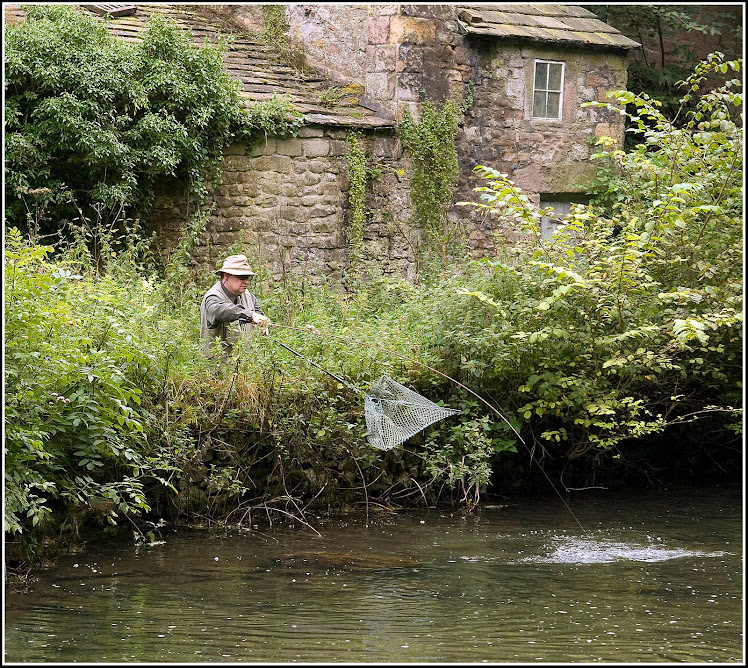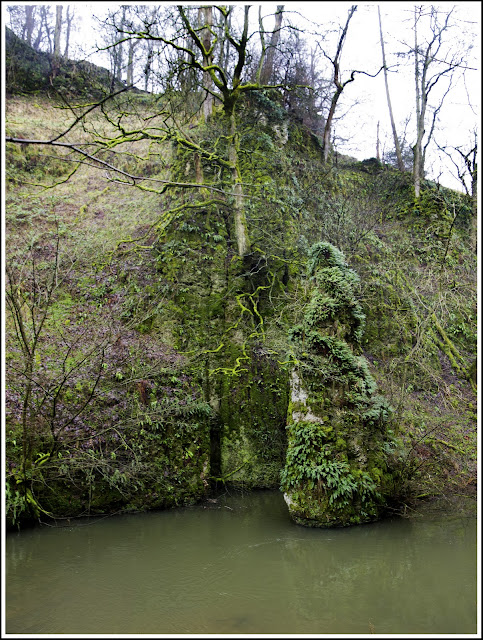The received wisdom about places from your past is to "never go back". You know the reasons why. Places shrink as we get older. More folk have found them and left their marks. Sometimes the places are pitiful reflections of what there had once been. That phrase, "never go back" has a classic fault in it, from an angling point of view at least. It has that dangerous word right at the beginning "never"! So we are in immediate conflict with another received wisdom in angling, "always avoid always and never say never".
 From 1991 to 2001 your faithful correspondent was a lucky member of the syndicate that enjoyed perhaps the greatest privilege there was to be had in angling, certainly the greatest privilege in fly fishing. We fished in the "Cradle" of Fly Fishing's History. Fly fishing was happening on this water back in 1675 when its then owner, Charles Cotton, wrote the fly fishing section for the fifth edition of Izaak Walton's Complete Angler under the title "The Complete Angler Part II being INSTRUCTIONS how to ANGLE for a TROUT or GRAYLING in a clear Stream."
From 1991 to 2001 your faithful correspondent was a lucky member of the syndicate that enjoyed perhaps the greatest privilege there was to be had in angling, certainly the greatest privilege in fly fishing. We fished in the "Cradle" of Fly Fishing's History. Fly fishing was happening on this water back in 1675 when its then owner, Charles Cotton, wrote the fly fishing section for the fifth edition of Izaak Walton's Complete Angler under the title "The Complete Angler Part II being INSTRUCTIONS how to ANGLE for a TROUT or GRAYLING in a clear Stream."

It was a wonderful fly water with brown trout and grayling both happy enough to take the dry fly, although the rules did say that "gentlemen may experiment with nymphs"! Politically incorrect most certainly, but we all understood that really we ought to stick with the dry fly for the sake of the fish being allowed some sanctuary in such an intimate water, although you would not get drummed out and black listed if you did cast the occasional nymph to some awkward monster grayling that was hugging the bottom. My biggest grayling there was 19¼ inches long from the nose to the fork in its tail, but that took a dry fly - Charles Cotton's Black Fly!

The syndicate sank quietly out of view after 1997, just a couple of us kept the faith into 2001, the result of a tragic pollution that just about sterilised the river for several miles. Carelessly discarded Cypermethrin sheep dip eradicated the invertebrates. There was not even a midge left. Silent spring followed for some years after. The fish and the insectivorous birds had no food. The birds were okay. They just cleared off! (Although their broods that summer were certainly unlucky...). The fish: adults and juveniles alike, were not okay though.
Thankfully, that sheep dip is now permanently banned!
 The inability of the water to support life meant it couldn't support the syndicate and so the revenues abruptly stopped. There was no one to take care of the river. Without funding there was no way to do restoration to the banks and create the variety of habitat that is necessary for a successful wild trout and grayling fishery. Very occasional visits to the lower reaches of the fishery did produce some success with pioneering trout that were slowly moving in to colonise the waters all over again, but it was not a viable wild trout fishery just yet.
The inability of the water to support life meant it couldn't support the syndicate and so the revenues abruptly stopped. There was no one to take care of the river. Without funding there was no way to do restoration to the banks and create the variety of habitat that is necessary for a successful wild trout and grayling fishery. Very occasional visits to the lower reaches of the fishery did produce some success with pioneering trout that were slowly moving in to colonise the waters all over again, but it was not a viable wild trout fishery just yet.
The unfettered growth of invasive, non-native species had hidden the banks and shaded out the river. The Ranunculus fluitans beds were just about gone.
The banks were poached by cattle with the resulting soil run-off, during winter's high waters, blinding the gravel beds with fatal results on any trout eggs that were waiting to hatch.
Things had to change and change dramatically for the better.
This is what happened.
Andy, a full-time, dedicated keeper was appointed. A scheme to attract anglers back to the water, at first on day tickets, did meet with some small success. There was just enough money to start on a little bit of the work that needed doing. Andy works as only the truly committed can. The results, thus far, are splendid. Charles Cotton's river has shown it is a true wild trout and grayling fishery. It is ready for the next stage in the long term plan. It will, once again, support a privileged, international syndicate of rods keen to experience fishing in Fly Fishing's "Cradle"! It will thrive and once more become the Arcadian delight it used to be. Watch this space as I find out more...
Regular Rod




 From 1991 to 2001 your faithful correspondent was a lucky member of the syndicate that enjoyed perhaps the greatest privilege there was to be had in angling, certainly the greatest privilege in fly fishing. We fished in the "Cradle" of Fly Fishing's History. Fly fishing was happening on this water back in 1675 when its then owner, Charles Cotton, wrote the fly fishing section for the fifth edition of Izaak Walton's Complete Angler under the title "The Complete Angler Part II being INSTRUCTIONS how to ANGLE for a TROUT or GRAYLING in a clear Stream."
From 1991 to 2001 your faithful correspondent was a lucky member of the syndicate that enjoyed perhaps the greatest privilege there was to be had in angling, certainly the greatest privilege in fly fishing. We fished in the "Cradle" of Fly Fishing's History. Fly fishing was happening on this water back in 1675 when its then owner, Charles Cotton, wrote the fly fishing section for the fifth edition of Izaak Walton's Complete Angler under the title "The Complete Angler Part II being INSTRUCTIONS how to ANGLE for a TROUT or GRAYLING in a clear Stream."  The inability of the water to support life meant it couldn't support the syndicate and so the revenues abruptly stopped. There was no one to take care of the river. Without funding there was no way to do restoration to the banks and create the variety of habitat that is necessary for a successful wild trout and grayling fishery. Very occasional visits to the lower reaches of the fishery did produce some success with pioneering trout that were slowly moving in to colonise the waters all over again, but it was not a viable wild trout fishery just yet.
The inability of the water to support life meant it couldn't support the syndicate and so the revenues abruptly stopped. There was no one to take care of the river. Without funding there was no way to do restoration to the banks and create the variety of habitat that is necessary for a successful wild trout and grayling fishery. Very occasional visits to the lower reaches of the fishery did produce some success with pioneering trout that were slowly moving in to colonise the waters all over again, but it was not a viable wild trout fishery just yet.